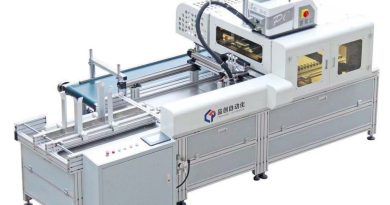“新一代自动化:箱体装配机械的战略进步,旨在优化生产并增强可持续性”
Innovative Developments in Box Assembly Machinery: Recent advancements in box assembly machinery focus on modular designs and increased automation, enabling faster setup times and greater flexibility in handling various box types and sizes. These innovations allow manufacturers to easily adapt to changing market demands without significant downtime for reconfiguration.
Enhanced Automation and Robotics: The integration of robotics into box assembly lines is a major trend, providing precision and efficiency previously unattainable with manual processes. Robotic arms equipped with vision systems can now accurately pick, place, fold, and secure components, ensuring high-quality assembly at speeds that significantly outpace human capabilities.
Smart Technology Integration: Smart technology is reshaping the landscape of box assembly machinery. With the implementation of IoT and AI, these machines can now predict maintenance needs, adapt to varying box specifications in real-time, and optimize production schedules based on workflow analysis. This level of connectivity not only boosts productivity but also enhances the reliability of the assembly process.
Energy Efficiency and Sustainability: Manufacturers are also focusing on making box assembly machinery more energy-efficient and less wasteful. Newer models are designed to consume less power and utilize materials more efficiently, reducing both energy costs and waste. Additionally, many machines now work seamlessly with recycled materials, supporting industry trends towards sustainability.
Quality Control Mechanisms: To ensure that each assembled box meets quality standards, modern assembly machines incorporate advanced inspection systems. These systems use cameras and sensors to check for defects such as improper alignment or incomplete seals, immediately flagging issues before products leave the production line. Such quality control is essential for maintaining brand reputation and customer satisfaction.
Challenges and Future Directions: Despite these technological advancements, challenges such as high initial investment costs and the technical skill required for operation remain. Future developments may focus on further reducing the cost of advanced technologies and enhancing user interfaces to make them more intuitive. Additionally, ongoing research into more sustainable production methods and materials is likely to influence the next generation of box assembly machinery.
Conclusion: The advancements in box assembly machinery are setting new standards for production efficiency, quality, and sustainability within the packaging industry. As these technologies continue to evolve, they promise to further enhance the capabilities of manufacturers, enabling them to meet the increasing demands of a dynamic market while adhering to environmental standards.



